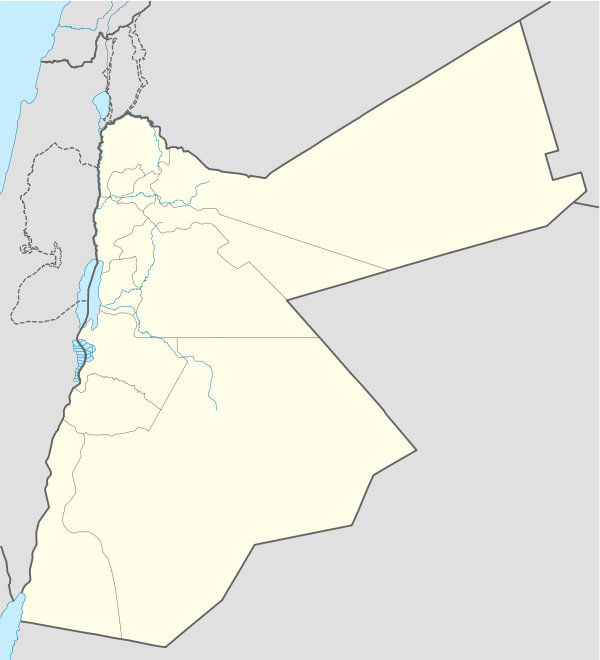Uyun al-Hammam
| عيون الحمام | |
 Shown within Jordan | |
| Alternative name | Uyun al-Hammam |
|---|---|
| Location | Irbid, Jordan |
| Coordinates | 32°30′28″N 35°42′9″E / 32.50778°N 35.70250°ECoordinates: 32°30′28″N 35°42′9″E / 32.50778°N 35.70250°E |
| Type | Burial site |
| Height | 221 metres (725 ft) above sea level |
| History | |
| Periods | Upper Paleolithic in the Levant |
| Cultures | pre-Natufian 16,500 BP |
| Site notes | |
| Excavation dates | 2005–present |
Uyun al-Hammam is a prehistoric burial site in Jordan. It is the earliest known formal burial site in the Middle East, and is possibly the oldest in the world.[1] Remains at the 16,500-year-old burial site, located in Wadi Ziqlab, were first discovered in 2000.
The Natufian culture occupied the Levant, and had interred a red fox together with a human in this site dated 17,700–14,750 YBP. The remains were buried in such a manner as to suggest that prehistoric humans in that locale may have kept foxes as companion animals, in a similar way to dogs. The find provides information on the earliest burial practices of ancient humans.[2]
References
- ↑ http://cosmiclog.msnbc.msn.com/_news/2011/02/03/5982412-earliest-known-cemetery-found?
- ↑ Maher, Lisa A; Stock, Jay; Finney, Sarah; Heywood, James J. N; Miracle, Preston T; Banning, Edward B (2011). "A Unique Human-Fox Burial from a Pre-Natufian Cemetery in the Levant (Jordan)". PLoS ONE. 6 (1): e15815. doi:10.1371/journal.pone.0015815. PMC 3027631. PMID 21298094.
Template:MEast-archaeology-stub
This article is issued from
Wikipedia.
The text is licensed under Creative Commons - Attribution - Sharealike.
Additional terms may apply for the media files.